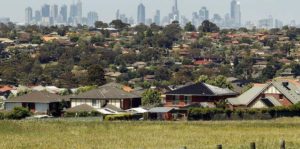Melbourne leading the way in population growth
 Melbourne remains the Australia’s fastest growing city and with the largest total increase in population – according to new data from the Australian Bureau of Statistics (ABS) – and overseas migrants make up the bulk of the hike.
Melbourne remains the Australia’s fastest growing city and with the largest total increase in population – according to new data from the Australian Bureau of Statistics (ABS) – and overseas migrants make up the bulk of the hike.
Melbourne’s population increased by 125,400 people, or 2.7 per cent, in 2016-17 to reach 4.9 million. It’s the second year in a row the city has grown by that figure – amounting to the biggest sustained population surge the city has seen since the gold rush of the 1850s.
If this growth rate continues, the city will reach a population of five million over the next year.
Net overseas migration was the major contributor to population growth in Melbourne, adding 80,000 people in 2016-17, or 64 per cent of total population change, the ABS said.
Natural increase contributed 29 per cent, while internal migration accounted for 7.3 per cent of population growth.
Most of Melbourne’s growth in 2016-17 occurred in the outer suburbs and around the city centre.
Cranbourne East, in the outer south-east, had the largest growth, not only in Victoria but in Australia, increasing by 7,300 people, or 27 per cent, in 2016-17. Net internal migration accounted for 85 per cent of this growth.
Inner-city Melbourne experienced the second largest growth in Australia in 2016-17, increasing by 4,600 people, 11 per cent, driven by overseas migration, which accounted for over three-quarters of population change.
The data also reveals that Australia’s estimated resident population reached 24.6 million at 30 June 2017, increasing by 388,100 people or 1.6 per cent since 30 June 2016.
All states and territories experienced population growth between 2016 and 2017. Victoria had the largest growth in terms of absolute numbers (144,400 people), followed by New South Wales (121,800) and Queensland (79,600). The Northern Territory had the smallest growth (370).
Victoria also grew fastest, increasing by 2.3 per cent, followed by the Australian Capital Territory (1.7 per cent), New South Wales and Queensland (both 1.6 per cent). The Northern Territory had the slowest growth (0.1 per cent), followed by South Australia and Tasmania (both 0.6 per cent), and Western Australia (0.8 per cent).
The combined population of Greater Capital Cities increased by 315,700 people (1.9 per cent) between 30 June 2016 and 30 June 2017, accounting for 81 per cent of the country’s total population growth.
For the first time on record, Sydney’s population grew by more than 100,000 people in one year. Sydney’s population hit 5.1 million at June 2017, an increase of 101,600 people (2 per cent) since June 2016, the ABS said.
Adelaide remains one of Australia’s slowest-growing capital cities, according to the ABS. Adelaide’s population increased by just 0.7 per cent in 2016-17, its lowest growth rate since 2003-04. Only Darwin experienced a slower growth rate (0.5 per cent).
Hobart’s recent trend of steady population growth is continuing. In 2016-17, the population of Hobart increased by 2,400 people (1.1 per cent), compared with an increase of 1,200 (0.5 per cent) in 2011-12. It is the fifth consecutive year that the Tasmanian capital has recorded an increasing rate of population growth.
Hobart is now growing at a faster rate than Darwin (0.5 per cent), Adelaide (0.7 per cent) and Perth (1.0 per cent).
ABS Demography Director Anthony Grubb said that the latest population estimates were the first to include data on the components driving population change in Australia’s capital cities and regions – natural increase (births minus deaths), internal and overseas migration.
“It is now possible to not only see how much population is changing in an area, but to understand why this change is occurring”, he said.
In Hobart, the contribution of each component to population growth was quite even. Net internal migration accounted for 36 per cent of population change in 2016-17, compared with 35 per cent from net overseas migration and 29 per cent from natural increase.
Five years ago Perth was growing faster than any capital city in Australia, but new data shows a substantial slowdown in population growth, according to the ABS.
In 2016-17, Perth’s population grew by 21,100 people (1.0 per cent). This is roughly one-third of the increase experienced when growth peaked in 2011-12. In that year, Perth’s population grew by 60,400 people (3.3 per cent).
Darwin’s population growth has slowed to its lowest level in more than a decade, according to the ABS.
Darwin’s population grew by just 700 people in 2016-17, an increase of 0.5 per cent. This is the lowest growth rate recorded since 2002-03, when the population declined by 0.2 per cent.
Darwin is now Australia’s slowest growing capital city, just behind Adelaide (0.7 per cent) and Perth (1.0 per cent).
Laurie Nowell
AMES Australia Senior Journalist












